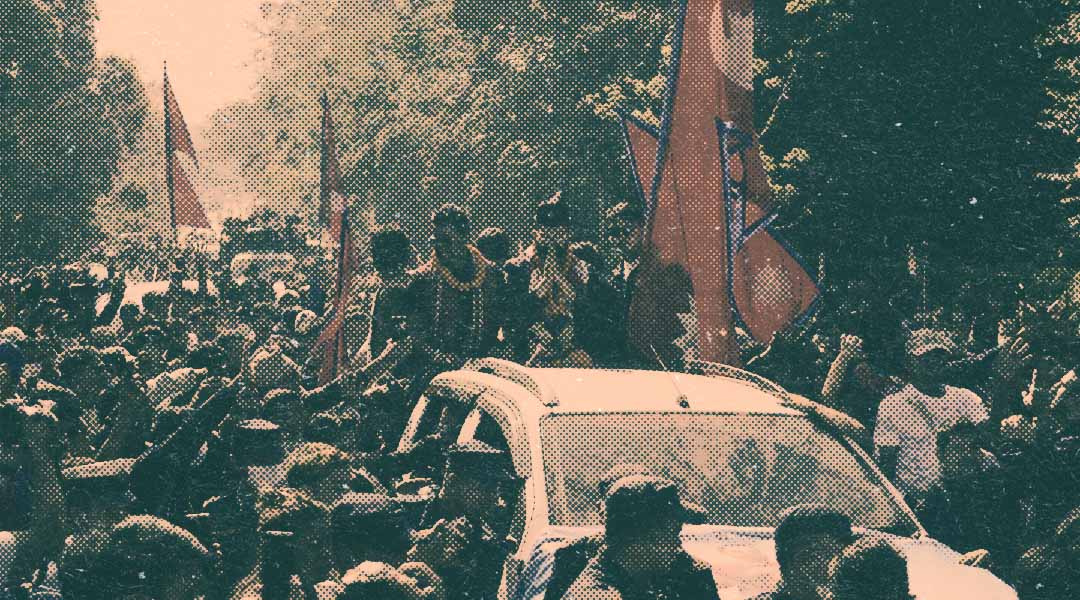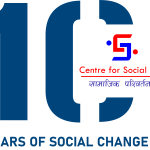
YOUTH PARTICIPATION IN THE GOVERNANCE PROCESS IN NEPAL
Photo by My Republica
Author : Yukta Yadav
The United Nations considers the age group of 15-24 as youth however in Nepal, the National Youth Policy was the first document to spell out the age bracket of youth as 16 to 40. Youth are one of the most significant segments of the population, not only because they hold a superior numerical value in the demography but also because they are a significant part of a nation’s future. They are the driving force of change as they bear a blend of inventive ideas and vigorous energy. These potentials of energy and ideas can be channeled and mobilized for development and social progress. Hence, the idea of youth participation has attained almost a mandatory status in policy documents. Additionally, the Constitution of Nepal 2015 has enshrined the provision of youth participation under Art 51 of the Directive principles.
This article thus intends to examine the status of constructive participation of youth in three key aspects of governance process- policy making, electoral and monitoring processes based on interactions with youth from Sunsari and Rupandehi districts during a research study.
‘Youth in governance’ refers to youth’s partnership with adults in setting the overall policy direction of organizations, institutions and coalitions. ‘Youth governance’ further focuses on the ways young people can be involved in decision making efforts at multiple levels of initiatives or organizations. It may include advising or instructing individuals or groups that hold the ultimate decision-making responsibility or circumstances where young people themselves are the ultimate decision makers.
The National Youth Policy acknowledges the need and rights of youth in the development of the nation. As this document extensively advocates the rights of the youth, it is also viewed as the human rights charter for youth. The policy includes seven objectives which are mainly focused on the overall development of youth, as well as their duties and responsibilities towards the nation. It further highlights the importance of youth participation in policymaking and policy implementation and strongly provides the theoretical rationale for youth participation in policy making process. However, when the research looked into the status of youth participation in terms of bringing an agenda into motion or involvement in consultation and feedback process while making policies, the practice of constructive engagement of youth was found to be minimal and politically biased in most of the palikas of Sunsari and Rupandehi districts.
It was observed during the research that few youths who bear membership to the political parties ruling the local government are invited for consultations when local level policies are drafted but the remaining youth are alien to such opportunities of engagement at local levels. In another instance, one of the palikas governed by the coalition of two different political parties included an inclusive panel of youth who were actively engaged in the consultation and feedback process whenever a youth related program was designed.
Despite their active participation in development, and meaningful efforts in governance processes, youth have less access than adults to formal decision-making processes, and to influencing policy. Also, translating these good intentions into practical actions has often been hindered by capacity and political constraints. This has resulted in a poor reflection of young people’s rights and interests in planning.
Also, as observed in the context of election, the notion that ‘politics is a dirty game’ is found to be widespread within the cluster of youth. Hence many among these youth groups choose to be apolitical by not taking interest in the political avenue. They either refrain from voting or end up voting under the influence of their family and community without pondering over the skills and capacity of the candidate. Additionally, according to Country Reports on Human Rights Practices published by US State Department in 2017, 24% of the Nepali population lack citizenship certificate which is the primary document for registration in voters’ list. This has increased their challenges to register in the voters’ list hence are forced to refrain from voting during the elections.
The elections bring quite a festive atmosphere where candidates make public appearances and conduct door-to-door campaigns with a group of supporters behind them. Such groups of campaigners generally comprises of youth who seek for opportunities of employment and are attracted by the promises of such opportunities by the candidates. Most of the youth claim to be used as baits to attract more voters a few months before elections and their time and energy is massively exploited by the party leaders and candidates for campaigning.
If we look back a few years, the candidacy of youth seemed to be a far-fetched idea in the local elections of 2017. The lack of experience of youth and the mistrust among voters towards their decision making abilities and trends of extravagant election expenses were some of the major obstacles for youth to stand as candidates in the elections. However, the scenario has changed since the local elections of 2022, where 41% of the candidates were under the age of 40 . It can be drawn that, the frustration of youth over the performance of conventional leaders and appointment of the same key political players time and again has brought about a new wave of change in terms of candidacy in the local elections where 59,402 individuals under age 40 were nominated in the 2022 local elections. Many of these nominees were independent individuals who did not have any alliance with conventional party.
The third aspect of the process of governance which was studied during the research was the participation of youth in the monitoring roles. Monitoring the government institutions and power holders is an integral aspect of good governance in order to evaluate whether their systems and practices produce the intended positive impact on citizens’ lives. In relation to which, the National Youth Policy 2010 defines its own monitoring and evaluation framework. The policy declares the Ministry of Youth and Sports as an overseer to monitor and evaluate whether the planned outputs and objectives have been achieved or fulfilled in full or in part. The policy also addresses the issue of adopting a participatory system for monitoring and evaluating, as well as regularly reviewing, revising, and improving the policy every five years. However, during conversations with youth, they claimed that there was no platform or well defined complaint/feedback mechanism at local institutions where they could monitor the service delivery of public institutions. These interactions strongly suggested that lack of such a platform may result in youth-led protests which seldom turns violent in order to draw the attention of the concerned authorities.
In order to analyze, the degree of participation of youth in the process of governance, a common question put across all the respondents was where youth participation in Nepal would rank. An average from the responses was then compared to Roger Hart’s ladder of participation. Spread through eight rungs, this tool helps analyzing the degree of participation from tokenism to meaningful participation. Youth participation in the process of governance in Nepal was found to lie on the Rung three, which is ‘Tokenism’. It is the degree of participation where young people appear to be given a voice, but in fact have little or no choice about what they do or how they participate. One of the major factors that led to these results is the economic factor that massively affect the degree of participation like basic financial responsibilities, expenses of the election, poverty, economic inequalities, and corruption while the gender roles, trend of immigration, caste/ethnic dynamics, family obligations and nepotism are some of the social factors.
Comparing the degree of participation between the aforementioned three aspects of governance process, it was found that youths are most active as campaigners in the electoral process. The short term benefits like daily stipend varying from Rs. (500/- to 1000/-), cost for vehicle fuel, lavish meals were found to be the major attractions for the involvement of youth in the campaigning process. Hence, youths must be self-aware regarding the short term benefits of the campaigning process and must demand for accountability for the return of their time and energy invested during the campaigns from the political leaders post elections.
If we look into the way forward, the political parties must allot quotas for youth in order to ensure youth participation in politics and the youths must gain political education from their end. A sense of realization is required among youth regarding their role as a voter to elect leaders based on their vision regardless of their intergenerational influence. Youth participation in the process of governance would abundantly increase if Youth Councils were formed in each local unit which will enable them to voice their opinions for the overall development of their unit. Platforms to bring their agendas into motion must be created at local level to engage them in the policy making process. The consultation and feedback process while drafting policy requires the inclusion of all the diverse groups within the cluster of youth through an open call. The Right to Information Act, 2064, allows citizens to seek transparency from the local institutions could come into play to fulfil the monitoring roles of youth.
The graphics, views and opinions expressed in the piece above are solely those of the original author(s) and contributor(s). They do not necessarily represent the views of Centre for Social Change.

Yukta Yadav is Researcher at Centre for Social Change, a Kathmandu based think tank and a graduate of law from REVA University, Bangalore, India. Her research interests include Madheshi marginalization, human rights, governance, and public policy. She has formerly worked with several youth organizations and is passionate about youth studies.
©2021 Centre for Social Change, Kathmandu

